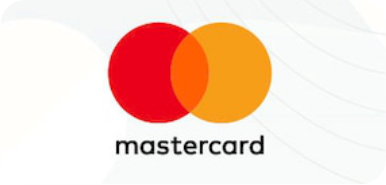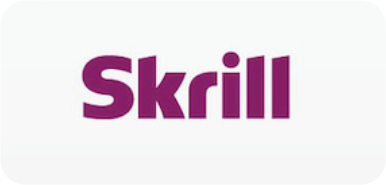If you want to improve your trading strategy, understanding how to use the Fibonacci retracement tool can help you make better decisions. Traders use it to predict price movements, find entry and exit points, and reduce risks. Some others use it to identify potential support and resistance levels. Fibonacci retracement tools will help you spot potential reversals and trend continuations regardless of whether you are trading Synthetic Indices, stocks, forex, or cryptocurrencies.
In this article, you will learn how Fibonacci retracement tools work, how to apply it correctly, and how to use it with other indicators for better accuracy.
What is Fibonacci Retracement and How Does It Work?
The Fibonacci retracement tool is a popular technical analysis indicator that helps traders identify potential price reversal points. It is based on the Fibonacci sequence, a mathematical pattern where each number is the sum of the two preceding ones.
In trading, the most commonly used Fibonacci retracement levels are 23.6%, 38.2%, 50%, 61.8%, and 78.6%. These levels indicate areas where price pullbacks may occur before continuing in the original direction of the trend.
How to Draw and Apply Fibonacci Retracement Levels
In order to draw and apply Fibonacci Retracements Levels, the following should be carried out.
Identify the Market Trend
Before using Fibonacci retracement, you need to determine whether the market is trending upwards or downwards. The tool works best in trending markets. Uptrend is used to Identify a swing low (starting point) and a swing high (ending point) while Downtrend is used to identify a swing high (starting point) and a swing low (ending point).
Draw Fibonacci Retracement Levels
Follow these steps to apply the Fibonacci retracement tool on your trading chart:
- Select the Fibonacci retracement tool on your trading platform.
- Click on the starting point (swing low in an uptrend or swing high in a downtrend).
- Drag the tool to the ending point (swing high in an uptrend or swing low in a downtrend).
- The tool will automatically display retracement levels on the chart.
Interpret Price Reactions at Fibonacci Levels
After applying the Fibonacci retracement tool, observe how price behaves at different levels:
- If the price bounces off a level and resumes the trend, it could indicate a strong entry point.
- If the price breaks through a level, it may signal a possible reversal.
Combine Fibonacci Retracement with Other Indicators
For greater accuracy, use Fibonacci retracement alongside other technical indicators such as:
- Moving Averages – To confirm the overall trend.
- RSI (Relative Strength Index) – To check for overbought or oversold conditions.
- MACD (Moving Average Convergence Divergence) – To analyze trend momentum.
- Candlestick Patterns – Look for confirmation signals like Doji, Hammer, or Engulfing patterns.
Set Stop Loss and Take Profit Levels
Fibonacci retracement tools help traders place effective stop-loss and take-profit levels.
Key Fibonacci Retracement Levels and Their Significance
Each Fibonacci level serves as a potential support or resistance zone:
1. 23.6% Level: Represents a minor retracement where price may slightly pull back before resuming the trend.
2. 38.2% Level: A moderate retracement level where price often finds support or resistance.
3. 50% Level: A psychological level where traders anticipate a potential reversal.
4. 61.8% Level (Golden Ratio): The most important Fibonacci level. Price often reverses at this level.
5. 78.6% Level: Suggests a deep retracement, indicating strong counter-trend momentum.
Fibonacci Retracement Trading Strategies
Fibonacci Retracement Trading Strategies include the following:
1. Trend Following Strategy
- Enter trades when the price pulls back to the 38.2% or 50% Fibonacci level.
- Wait for confirmation signals like candlestick patterns.
- Set stop-loss below the retracement level.
2. Breakout Strategy
- Wait for price to break above or below a Fibonacci level.
- Enter a trade in the direction of the breakout.
- Use Fibonacci extension levels for take-profit targets.
3. Support & Resistance Strategy
- Use Fibonacci levels as dynamic support and resistance zones.
- Enter trades when price bounces off a retracement level.
4. Multiple Timeframe Analysis
- Use higher timeframes to identify stronger Fibonacci levels.
- Enter trades on lower timeframes for precise execution.
How to Use Fibonacci Retracement for Day Trading
Day traders rely on quick decision-making, and Fibonacci retracement can be a valuable tool for spotting short-term opportunities. To apply it effectively in day trading:
- Identify the highest high and lowest low of the trading session.
- Apply the Fibonacci retracement tool and watch how the price reacts at key levels.
- Look for confluences with support and resistance, trend lines, or moving averages.
- Combine with momentum indicators like RSI or MACD to confirm trade entries.
Common Mistakes to Avoid When Using Fibonacci Retracement tools
There are common mistakes you need to avoid when using Fibonacci Retracement tools. They are:
1. Using Fibonacci in a Sideways Market
Fibonacci retracement is most effective in trending markets. Avoid using it when price action is range-bound.
2. Incorrectly Drawing Fibonacci Levels
Always place Fibonacci levels from the correct swing points. Drawing them inaccurately can lead to misleading signals.
3. Relying Only on Fibonacci Retracement
Fibonacci retracement should be used with other indicators to confirm trade setups. Relying on it alone can increase risks.
4. Overcomplicating Your Trading Strategy
Keep your analysis simple. Using too many Fibonacci levels or indicators can create confusion and lead to poor decision-making.
Conclusion
In summary, using the Fibonacci retracement tool is an essential skill that every trader should learn. You to understand how to identify key levels and combine them with other technical indicators so that you can improve your decision-making process and enhance your ability to spot profitable trade opportunities.
Remember, the Fibonacci retracement tool is best used alongside other technical indicators for more reliable results. By practicing and applying this tool to real market scenarios, you will improve your skills and build confidence in your trading decisions.
Frequently Asked Questions (FAQs)
How accurate is the Fibonacci retracement tool?
- The Fibonacci retracement tool is not 100% accurate, but it helps traders identify high-probability support and resistance levels. Its accuracy improves when used with other indicators.
Can Fibonacci retracement be used in all markets?
- Yes, Fibonacci retracement works for stocks, forex, cryptocurrencies, and commodities.
What is the most important Fibonacci retracement level?
- The 61.8% level is considered the most important because it aligns with the Golden Ratio, a key concept in financial markets.
Should I use Fibonacci retracement alone?
- No, always combine Fibonacci retracement with trend indicators, momentum oscillators, and candlestick patterns for better accuracy.
What is the best timeframe to use Fibonacci retracement?
- Short-term traders: Use 1M, 5M, 15M charts.
- Swing traders: Use 1H, 4H charts.
- Long-term investors: Use daily and weekly charts.










